Kitchenponics
Center for Agricultural research and Ecological studies (Vietnam National University of Agriculture) presents “Homewaste treatment and auto irrigation system for vegetables and bonsai”.

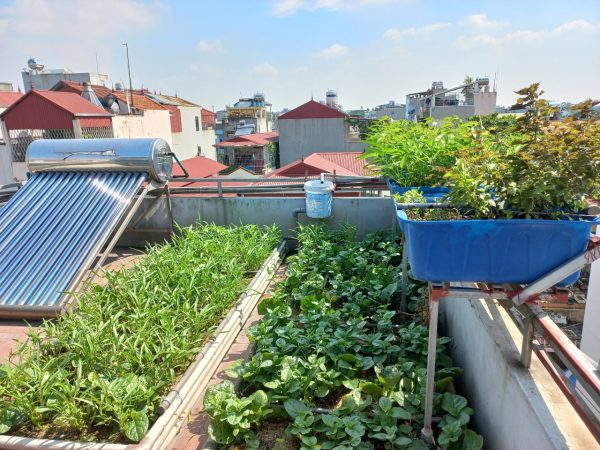
The system consists of 3 major components: (1) water tank & small tank for filling wastes; (2) a similar hydroponics component; and (3) water pump and airpump.
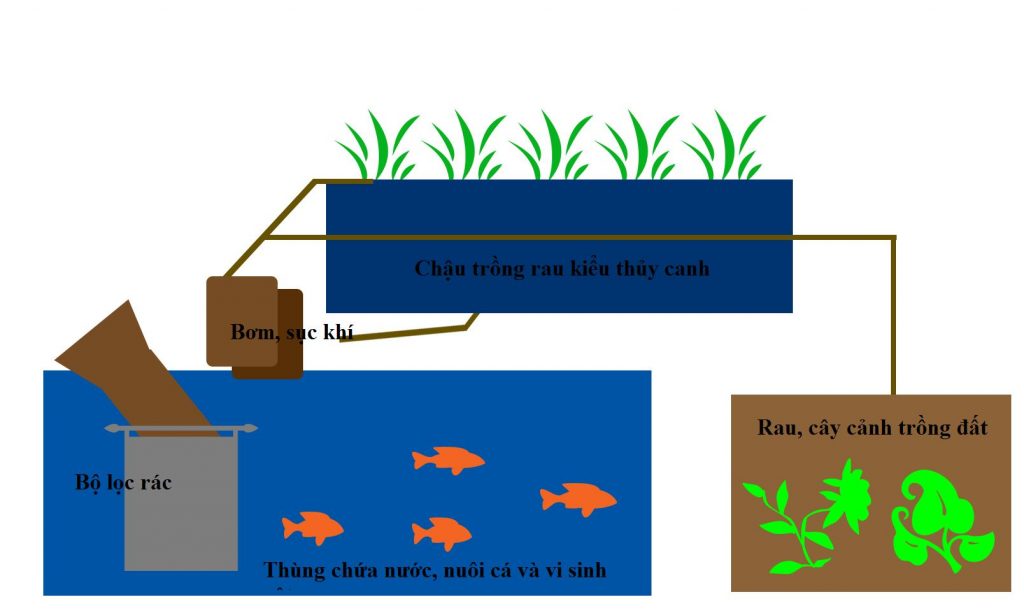
-
- For a family, water tank of around 0.5 to 0.7 cubic meter is sufficient. Organic wastes are collected and discharged into the tank daily or every 2-3 days, depending on quantity of wastes collected. Some fishes are released into the tank to control mosquito and other animal larva.
- The similar hydroponics component assists (installed in the same way as the Aquaponics system): (1) enriching oxygen to facilitate composting processes; (2) providing niches for composting microorganisms; (3) creating physical disturbance to control algae; (4) planting additional vegetables which are 100% organic.
- In parannel with the hydroponics component, plastic media and/or net is also installed into water tank to provide niches for microorganisms. Airpump provides oxygen to facilitate composting processes. Performance of these two components help control bad smell and harful bacteria.
3. System operation and cleaning
Water from compost tank will be collected to a small tank for irrigation for vegetables and bonsai based on auto-irrigation system which is named: “semi-dripping system” to control water jam. The system operates totally naturally without any kind of effective microorganism or chemicals added. Disolved nutrients and daily irrigation help increasing nutrient effeciency, saving a lot of labor and irrigation water as compared to conventional composting practices, utilization of compost, and mannual irrigation. Soil-based vegetables will be further fertilized by small quantity of NPK, simply added to small tank that collect water for irrigation. Vegetables from hydroponic and soil-based components were tested and super safe in terms of nitrogen content.
With a pump of 150 watt, in hot climate in Hanoi, irrigation is taken twice per day, each takes 30 second for pump operation (about 50-60 litter of waste water for a total of 6 square meter of vegetables and 25 bonsai pots in multi-floors. Auto irrigation and daily organic nutrient provision support vegetables and bonsai development, even in very hot summer in Hanoi without any netcover needed.
After 4 to 5 months of operation, stop filling wastes for 5 to 7 days. After that, removing all wastes left in the waste-receiving tank. The wastes can be used directly for vegetables and bonsai. Alternatively, 2 wastes-receiving tanks can be installed. Then each tank can be periodically used and cleaned without stopping time of waste disposal needed.
4. Advantages of the system
- The system operates simply, easy to periodically maintane, no smell, composting waste water support fish growth, and saving a lot of labor and irrigation water, especially for multi-floor houses.
- The operation principle can be applied for vegetables/fruits, animal waste treatment at small and midium scale.
- North Vietnam with a cold winter that does not support most types of common fishes.In this season, fishes can be replaced by organic wastes to provide nutrient for winter crops. When the spring come with higher temprature that allows fish survival, it will take about 3-5 days for the system operated with clean water, then fishes can be released into the system.
5. Some pictures of the system

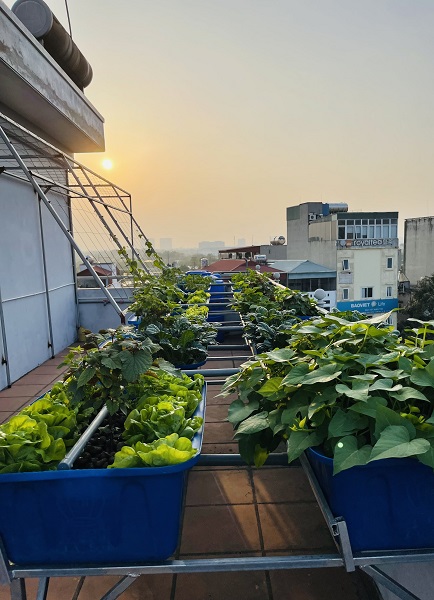
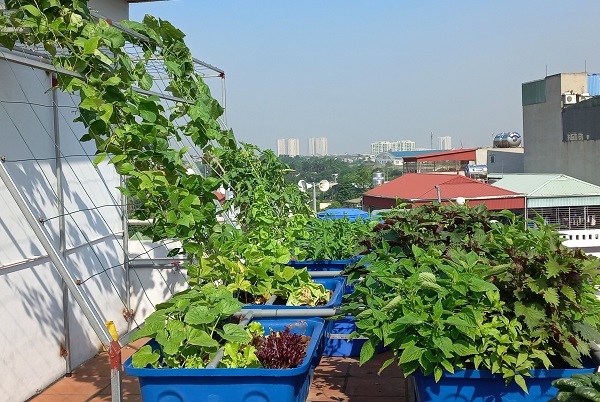
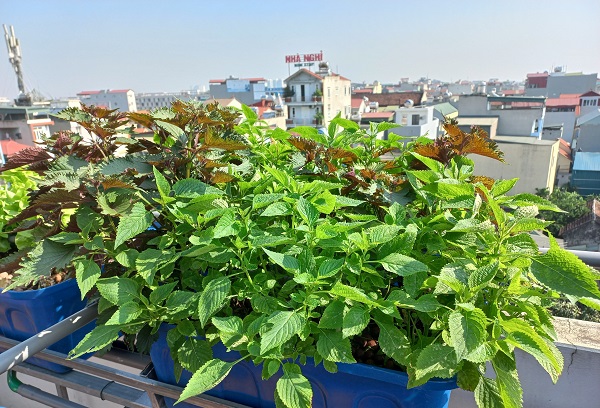
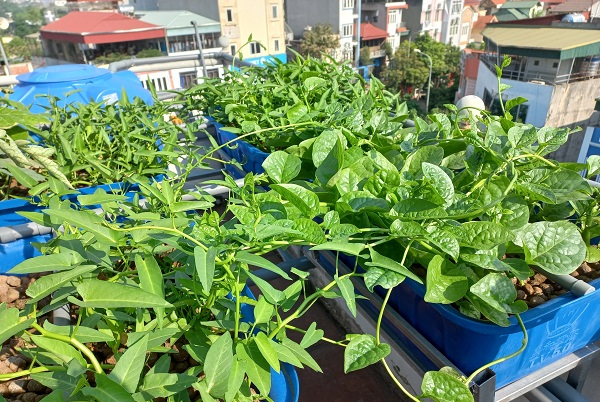
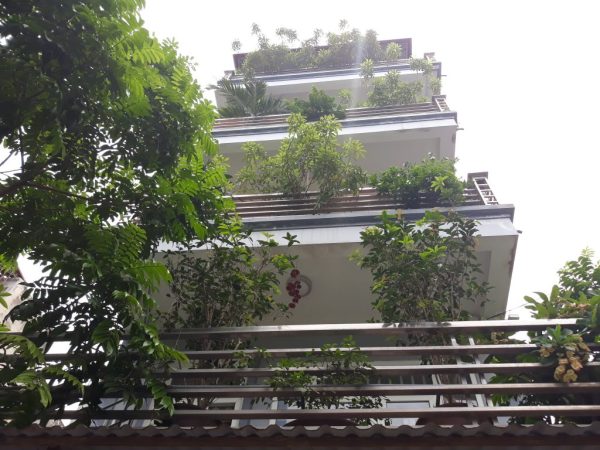
6. Contact Info
– For details on the Kitchenponics system, visit here.
– To set up a Household-scale Kitchenponics system, contact us.
- Center for Agricultural research & Ecological studies
- Address: Trau Qui – Gia Lam – Hanoi – Vietnam
- Tel: 84-4-38765607
- Email: cares@vnua.edu.vn
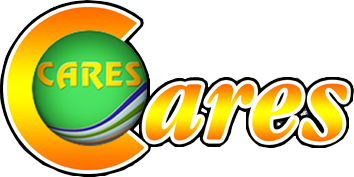

 Tiếng Việt
Tiếng Việt